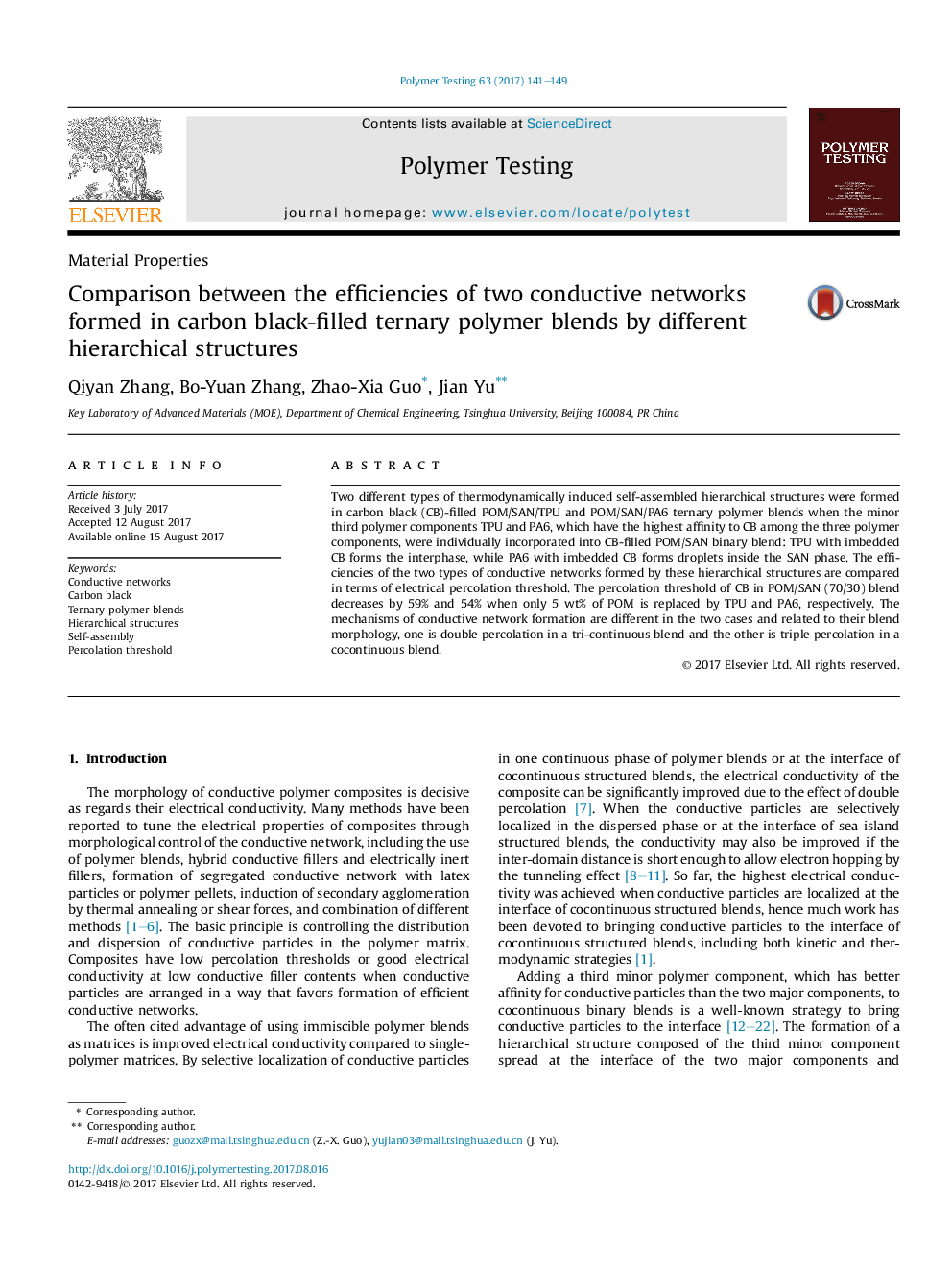| Article ID | Journal | Published Year | Pages | File Type |
|---|---|---|---|---|
| 5205244 | Polymer Testing | 2017 | 9 Pages |
Abstract
Two different types of thermodynamically induced self-assembled hierarchical structures were formed in carbon black (CB)-filled POM/SAN/TPU and POM/SAN/PA6 ternary polymer blends when the minor third polymer components TPU and PA6, which have the highest affinity to CB among the three polymer components, were individually incorporated into CB-filled POM/SAN binary blend: TPU with imbedded CB forms the interphase, while PA6 with imbedded CB forms droplets inside the SAN phase. The efficiencies of the two types of conductive networks formed by these hierarchical structures are compared in terms of electrical percolation threshold. The percolation threshold of CB in POM/SAN (70/30) blend decreases by 59% and 54% when only 5Â wt% of POM is replaced by TPU and PA6, respectively. The mechanisms of conductive network formation are different in the two cases and related to their blend morphology, one is double percolation in a tri-continuous blend and the other is triple percolation in a cocontinuous blend.
Keywords
Related Topics
Physical Sciences and Engineering
Chemistry
Organic Chemistry
Authors
Qiyan Zhang, Bo-Yuan Zhang, Zhao-Xia Guo, Jian Yu,
